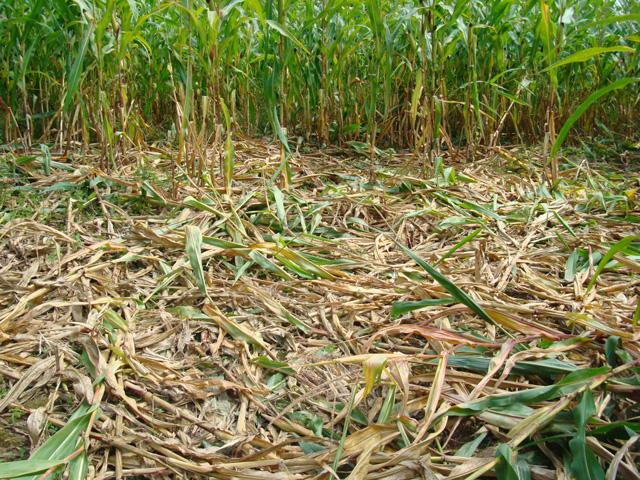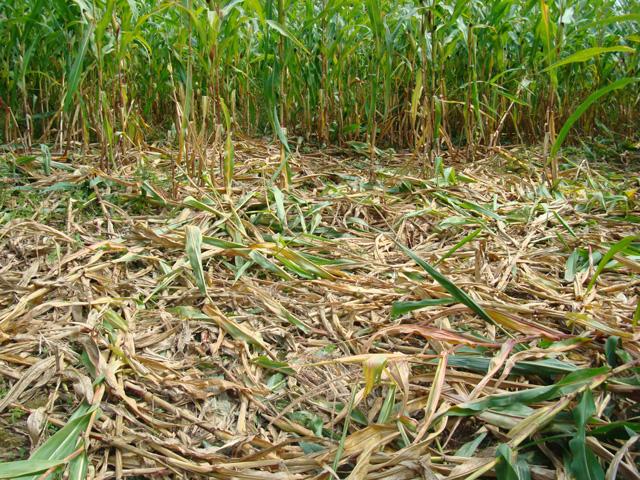Production Blog
Wreaking Havoc: Four Invasive Species Impacting US Agriculture
JEFFERSON CITY, Mo. (DTN) -- They arrive on trains, planes and automobiles. They stow away on pallets, hide inside packing materials and burrow under potting mix. They smuggle themselves in bilge water, hitchhike on hurricane winds and traverse in tire treads.
No matter how they got across the border, invasive species are here. Lots of them. It's estimated there are more than 6,500 non-native plants, animals, pathogens and microorganisms established in the United States, each posing varied risks to native plants, animals, microorganisms, natural ecosystems, human and wildlife health, and agriculture.
Here in my mid-Missouri neighborhood, it doesn't take much effort to find a plant or animal that shouldn't be here. Dead and dying ash trees -- victims of the emerald ash borer -- blemish our woodlots. Invasive autumn olive shrubs and Callery pear trees riddle our roadsides and fencerows. Multiflora rose, Sericea lespedeza and teasel encroach on pastures. Asian carp and zebra mussels inhabit the waters of the nearby Missouri River.
Last year, a study led by an Auburn University researcher and published in the journal, Science of the Total Environment, determined that the economic costs of biological invasions in the U.S. have conservatively totaled $1.2 trillion since 1960, with costs estimated at more than $21 billion annually between 2010 and 2020. Perhaps not surprisingly, agriculture was the most impacted sector with nearly $510 billion in damages, according to the study.
While species that tend to invoke human fear typically dominate news headlines (cue the "murder hornets," snakehead fish, jumping earthworms and giant pythons), it's those who more quietly wreak havoc that seem to pose the greatest risks to agriculture. In many cases, the threat that invasive species pose isn't well known beyond the agricultural sector or geographic region they affect.
The North American Invasive Species Management Association has designated this week as "National Invasive Species Awareness Week," so here's a look at four species who have been causing problems for U.S. farmers.
P[L1] D[0x0] M[300x250] OOP[F] ADUNIT[] T[]
1. Feral swine -- With a population estimated at more than 6 million across 38 states and counting, feral hogs are highly adaptable and capable of thriving in any environment. And as prolific breeders, their numbers can grow at an alarming rate.
Feral hogs will eat almost any crop and cause damage with their rooting and wallowing behaviors. Not only can they destroy fields, pastures, orchards and vineyards, but they also can harbor and transmit disease, posing a threat to livestock.
Early estimates placed the total cost of damages and control at $1.5 billion annually, but according to USDA, ongoing research indicates the costs in the United States are likely considerably higher.
2. Asian citrus psyllid -- This tiny insect has caused giant problems for U.S. citrus growers since it was first detected in Florida in 1998. When this pest feeds on the leaves and stems of citrus trees -- including oranges, lemons, limes and grapefruit -- it can cause serious damage. Moreover, the psyllid can transmit a bacterium that causes Huanglongbing (HLB) disease, more commonly known as citrus greening.
The disease impairs citrus trees, resulting in fewer and smaller fruit over time. Greening also can turn fruit bitter. All commercial citrus varieties are susceptible to HLB, and there is no cure. Once infected, a tree ultimately dies.
The Florida citrus industry has been severely impacted by this invasive species. Throughout the 1990s and early 2000s, before the detection of citrus greening, overall citrus production annually topped 200 million boxes. For the 2022-2023 season, USDA projects the state will only produce 20 million boxes of oranges, 1.8 million boxes of grapefruit and 600,000 boxes of specialty fruit, marking the smallest overall crop since 1929-1930.
3. Japanese beetle -- Since being discovered in New Jersey in 1916, this scarab beetle has gradually moved westward, attacking the foliage, flowers or fruits of more than 300 different ornamental and agricultural plants. It is a major pest in the turf and ornamental industry, where management costs alone reach about $450 million annually.
As adults, the beetles are a pest in corn and soybean production. While feeding on corn leaves does occur, the main concern is silk clipping, which can interfere with pollination and lead to reduced seed set. In general, Japanese beetles prefer soybeans over corn, and the edges of fields can experience severe defoliation. Soybean fields with sandy soils seem to be at higher risk of infestation. Japanese beetles prefer to lay eggs where grass is present since larvae primarily feed on grass roots. Corn fields may be at higher risk of feeding if they follow sod, cover crops or soybeans (though to a lesser degree than sod or cover crops).
4. Spotted lanternfly -- First detected in Pennsylvania in September 2014, this invasive is native to China and feeds on a wide range of fruit, ornamental and woody trees. The species does not fly long distances; instead, it's a hitchhiker, laying inconspicuous egg masses that can be inadvertently transported to new areas. To date, it's been detected in 14 states as far west as Indiana.
In a 2019 Penn State study, the expected overall statewide economic impact of lanternfly damage on Pennsylvania agriculture alone could exceed $42 million annually. According to USDA APHIS, the pest poses a threat to almonds, apples, apricots, cherries, grapes, hops, nectarines, peaches and plums, as well as maple, oak, pine, popular, sycamore and walnut trees.
Read more from DTN about the spotted lanternfly here: https://www.dtnpf.com/…
To learn more about National Invasive Species Awareness Week, visit www.nisaw.org.
Jason Jenkins can be reached at jason.jenkins@dtn.com
Follow him on Twitter @JasonJenkinsDTN
(c) Copyright 2023 DTN, LLC. All rights reserved.






Comments
To comment, please Log In or Join our Community .